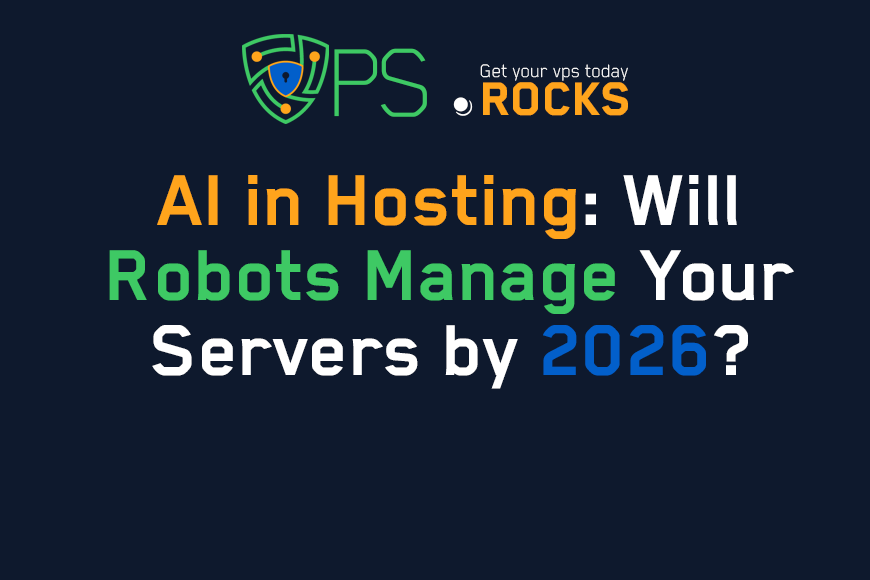
AI in Hosting: Will Robots Manage Your Servers by 2026?
Content Tree
Your online store’s checkout system crashes during a flash sale. While your team scrambles to reboot servers, AI-powered competitors automatically scale resources and steal your customers. By 2026, this scenario could define winners and losers in hosting.
Let’s unpack how AI is reshaping server management—and whether “robot admins” will replace human IT teams.
1. The AI Hosting Revolution: What’s Happening Now
From Reactive to Predictive Maintenance
Modern AI tools like AWS Lambda and Google Cloud’s Autopilot already:
- Predict hardware failures 48 hours in advance (2024 Forrester Report).
- Auto-scale resources during traffic spikes (like Black Friday).
- Block DDoS attacks in milliseconds vs human response times (avg. 15 minutes).
Real-World Example: Shopify reduced server downtime by 70% using AI-driven anomaly detection to flag issues before customers noticed.
2. The 2026 Forecast: 3 Ways AI Will Transform Hosting
Trend 1: Self-Healing Servers
By 2026, AI could automatically:
- Re-route traffic during outages
- Patch vulnerabilities in real time
- Optimize energy use (cutting hosting costs by 30%—2025 Gartner Prediction)
Trend 2: No-Code AI Management
Small businesses might control servers via natural language:
“Double storage if sales exceed 1,000 orders/hour.”
Trend 3: AI “Co-Pilots” for IT Teams
Human engineers will oversee AI tools instead of manual tasks—like pilots monitoring autopilot systems.
3. Human vs Machine: Where AI Falls Short (For Now)
The Limits of Robot Administrators
- Complex troubleshooting: AI struggles with novel issues (e.g., zero-day exploits).
- Ethical decisions: Who’s liable if AI misconfigures a server handling medical data?
- Customer empathy: Bots can’t replicate a sysadmin’s nuanced client communication.
Stat Alert: 68% of IT leaders say AI will augment (not replace) their teams by 2026 (2024 IDC Survey).
4. How to Prepare: A 2026 Readiness Checklist
Step 1: Audit Your Hosting Stack
- Identify repetitive tasks (backups, scaling) ripe for AI automation.
- Use tools like New Relic AI to benchmark performance.
Step 2: Choose Your AI Adoption Level
| Approach | Best For | Risk Level |
|---|---|---|
| AI-Assisted | Teams keeping control | Low |
| AI-Driven | Startups needing speed | Medium |
| Full Autonomy | Large enterprises | High |
Step 3: Test Drive AI Tools
- Free tier trials: Try Cloudflare’s AI-powered load balancing.
- Hybrid models: Pair managed hosting with AI monitoring tools like Datadog.
5. The Cost of Ignoring AI: A 2026 Risk Assessment
Companies resisting AI could face:
- 2x slower incident response vs AI-equipped competitors.
- 35% higher labor costs due to manual server management (2025 McKinsey Analysis).
- Compliance gaps: AI automatically enforces regulations like GDPR; humans forget.
Case Study: A fintech startup using AI hosting saved $120K/year in IT costs while achieving 99.99% uptime.
FAQ: Burning Questions About AI Hosting
Q: Will AI eliminate IT jobs by 2026?
A: Unlikely—but roles will shift. Expect demand for AI supervisors and automation architects.
Q: Is AI hosting secure?
A: Yes, if configured properly. Look for providers with ISO 27001 certification and explainable AI protocols.
Q: Can small businesses afford AI hosting?
A: Absolutely. Tools like Linode’s AI Optimizer start at $50/month—cheaper than hiring a part-time sysadmin.
"AI in Hosting: Will Robots Manage Your Servers by 2026?"
VPS.Rocks





